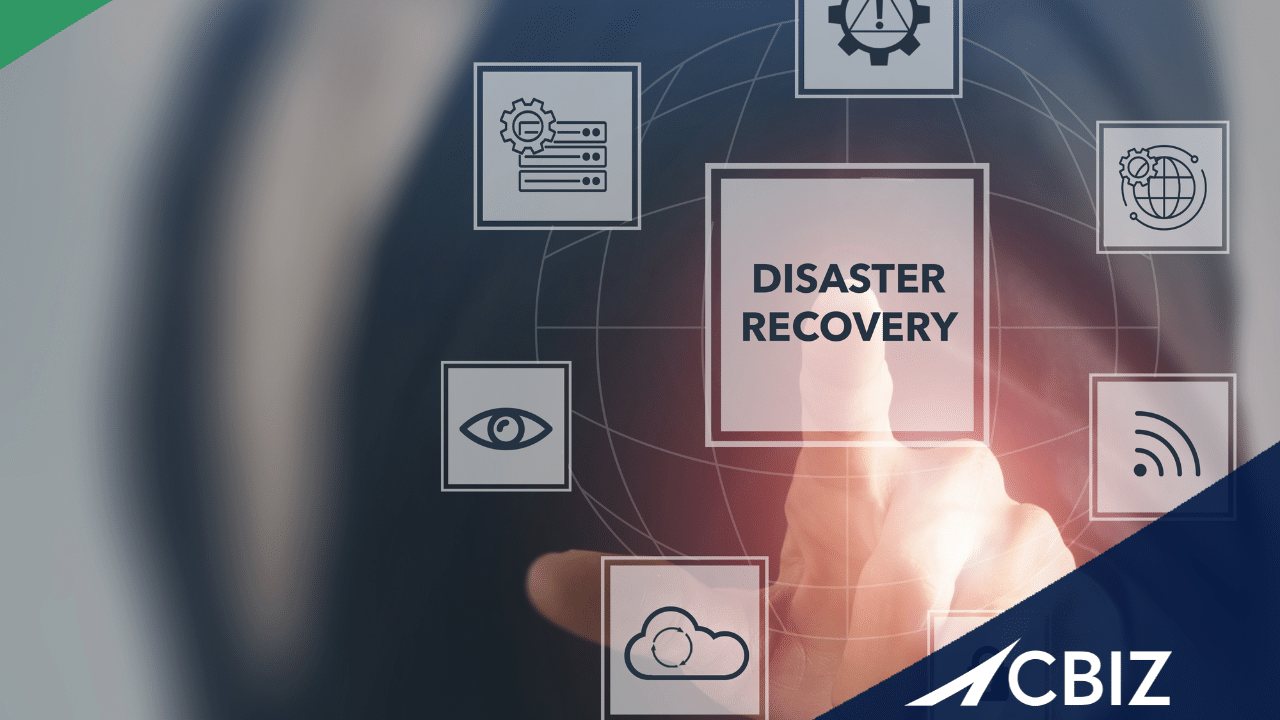
National Preparedness Month is a crucial reminder of the importance of disaster recovery (DR) plans for businesses. In our previous blog, we discussed the basics of disaster recovery planning for small and medium-sized businesses (SMBs). Now, we’ll delve into specific scenarios that illustrate why a well-crafted DR strategy is essential.
The unexpected can strike at any moment—whether it’s a cyberattack, service disruption, or natural disaster. Through real-world examples, we aim to show why a robust DR plan is vital for protecting your business from financial losses, operational disruptions, and reputational damage.
In this blog, we’ll guide you through various disaster scenarios, examine their potential impacts, and demonstrate how a comprehensive DR plan can mitigate these risks. Let’s explore how proactive planning can ensure your business remains resilient and ready to face any challenge.
Understanding the Impact of Disasters and the Need for a DR Plan
Before delving into specific disaster scenarios, it’s essential to understand the significant costs of being unprepared. Without a solid DR plan, businesses can face severe financial repercussions. Expenses tied to data recovery, ransom payments, and operational downtime can quickly outstrip the cost of implementing a robust DR strategy.
Service outages and extended disruptions can cause lasting financial and reputational damage. Interruptions in operations may lead to client dissatisfaction, with effects that extend well beyond the immediate crisis.
Additionally, many cybersecurity insurance providers now require businesses to maintain reliable and tested backups. Failing to meet these criteria can leave your business exposed and uninsured when you need coverage most. Investing in a comprehensive DR plan isn’t just a precaution; it’s crucial for compliance and ensuring business continuity.
Real-World Scenarios: Why Your DR Plan Matters
You might wonder how a disaster recovery (DR) plan can benefit your business in practical terms. By examining real-world examples, you’ll gain insight into how proactive planning can protect your business from potentially devastating impacts.
Scenario 1: Ransomware Attack
Imagine Company A, a small manufacturing firm, suddenly finds its entire network encrypted by ransomware. Cybercriminals demand a hefty ransom in exchange for the decryption key, leaving the company with a tough decision: pay the ransom or risk losing critical data.
Impact:
Financial Loss: Recovering from a ransomware attack can be costly, involving ransom payments, IT recovery efforts, and lost productivity.
Operational Downtime: With system access denied, Company A’s production halts, resulting in missed deadlines and potential loss of business.
Reputation Damage: Clients and partners may lose trust in the company’s ability to secure sensitive information.
DR Plan Solution: A comprehensive DR plan would ensure Company A has secure, tested backups that can be quickly restored, reducing downtime and financial loss. Regular backup tests are essential to confirm that data can be recovered without paying the ransom.
Scenario 2: Service Provider or Internet Provider Outage
Company B, a marketing agency, relies heavily on cloud-based services and constant internet connectivity. One day, their internet service provider experiences a major outage, leaving the company without access to critical tools and data.
Impact:
Loss of Productivity: Employees are unable to access email, client files, and essential software, bringing work to a halt.
Client Dissatisfaction: Missed deadlines and disrupted communication damage the company’s reputation.
Financial Loss: Extended outages lead to significant financial losses due to halted projects and missed opportunities.
DR Plan Solution: Company B’s DR plan should include alternative internet solutions, such as mobile hotspots or secondary service providers, to ensure continuous access to the internet and cloud services. Local backups of critical data also allow work to continue offline if necessary.
Scenario 3: Office Outage
Company C, a financial advisory firm, faces a sudden office outage due to a severe storm that causes power failure and physical damage to the building. The company is unable to access its on-premises servers and workstations.
Data Inaccessibility: Critical financial data and client records stored on local servers become inaccessible.
Service Disruption: Advisors cannot meet with clients or conduct business, leading to a loss of trust and revenue.
Recovery Costs: Significant expenses are incurred for repairing physical damage and restoring IT infrastructure.
DR Plan Solution: For Company C, a DR plan would involve offsite backups and a cloud-based infrastructure that allows employees to access necessary data and applications remotely. Additionally, having a predefined communication plan ensures clients are informed and reassured during the outage.
Invest in Your Business’s Future
Investing in a robust DR plan is not just a precaution—it’s a critical component of a resilient and successful business strategy.
Think of a disaster recovery plan as an essential insurance policy for your business. It may seem like an additional expense, but the peace of mind and financial security it provides are invaluable.
At CBIZ CompuData, we recognize that small and medium-sized businesses (SMBs) face distinct challenges in managing risks and ensuring business continuity. Our expertise in crafting tailored DR solutions ensures that your business is prepared to handle any crisis with confidence. We offer comprehensive DR planning that aligns with your specific needs, providing the tools and support necessary to safeguard your operations and reputation.
For more information on how CBIZ CompuData can help your business develop a comprehensive disaster recovery plan, email us.


